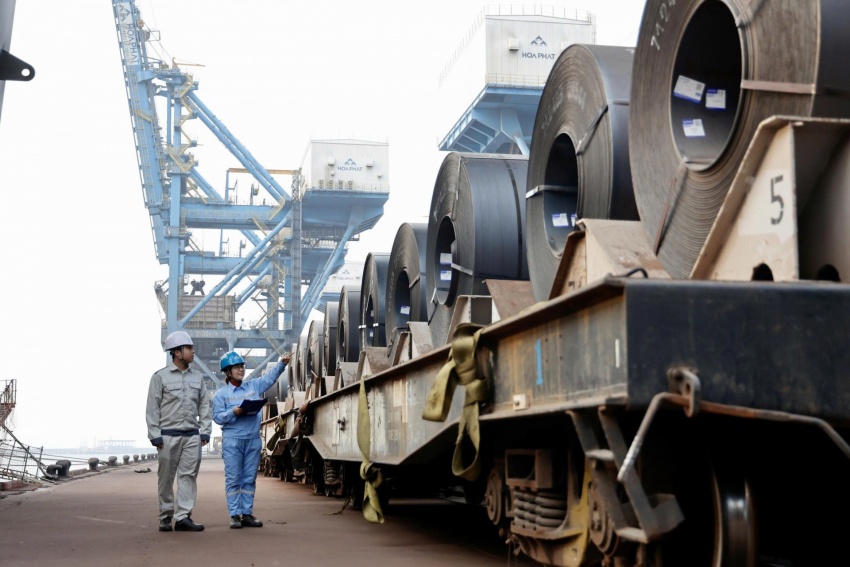At a national conference in Hanoi on October 9, held ahead of Vietnam Entrepreneurs’ Day, Hoa Phat Group chairman Tran Dinh Long urged the government to streamline decision-making, enhance transparency in public procurement, and prioritise Vietnamese products. He explained that clearer and more responsive policies are crucial to helping local industries remain competitive amid international headwinds.
Reflecting on nearly three decades since Vietnam joined ASEAN, Hoa Phat Group chairman Tran Dinh Long said, “The steel sector has evolved from a peripheral player to a pillar of regional manufacturing. From an output of just over one million tonnes in 1995, Vietnam has become Southeast Asia’s largest steel producer and now ranks 11th globally, reflecting the strength of our industry as well as Vietnam’s success in economic integration.”
He called for faster and more decisive implementation of the Politburo’s Resolution No.68-NQ/TW on private-sector development, stressing that bureaucracy remains a brake on enterprise growth. “Time is life in business. Every delay means missed opportunities,” he said. “Enterprises need ministries and local authorities to respond faster and act with conviction.”
Long also warned that rising global protectionism is compounding challenges for Vietnamese exporters, citing the EU’s recent move to double steel import duties from 25 to 50 per cent. “This will hit our exports directly,” he said. “The government needs flexible, timely countermeasures to safeguard domestic production while keeping trade fair and rules-based.”
For state-funded projects, Long urged ministries and agencies to prioritise Vietnamese materials that meet technical standards, arguing that national procurement policies should directly support local manufacturing. “The message is simple: if Vietnamese producers can deliver, they should have the first chance,” he said. Transparent bidding and fair competition, he added, must guide all major public schemes, from social and worker housing to national infrastructure.
“Domestic enterprises have invested heavily in capacity and technology,” Long concluded. “We’re ready to drive the country’s development, but that requires a level playing field and clear, consistent rules.”
 |
Hoa Phat’s recent performance underscores its leading position. In the third quarter of 2025, the group produced 2.8 million tonnes of crude steel, up 14 per cent on-quarter and 35 per cent on-year. Sales of hot-rolled coil (HRC), construction steel, high-quality steel and billets reached 2.5 million tonnes, an increase of 21 per cent compared to the same period last year.
Construction steel and rolled steel sales fell 17 per cent from the second quarter to just over one million tonnes, affected by the low building season and adverse weather. In contrast, HRC sales climbed 8 per cent from the previous quarter and 71 per cent on-year to over 1.2 million tonnes. September alone saw a record 477,000 tonnes sold.
Downstream HRC products also expanded steadily, with coated steel sheets reaching 120,000 tonnes and steel pipes 225,000 tonnes in the quarter.
Over the first nine months of 2025, Hoa Phat produced 7.9 million tonnes of crude steel, up 23 per cent on-year. Total steel sales reached 7.4 million tonnes, up 22 per cent, maintaining its 37 per cent market share in construction steel.
HRC output surged 51 per cent to 3.43 million tonnes, accounting for more than 56 per cent of Vietnam’s total, according to the Vietnam Steel Association. Coated steel output reached 320,000 tonnes (down 7 per cent), steel pipes 627,000 tonnes (up 25 per cent), and pre-stressed and wire-drawn steel 116,000 tonnes (up 25 per cent), with exports contributing 42 per cent.
The completion of blast furnaces No.1 and No.2 at the Hoa Phat Dung Quat 2 complex during the second and third quarters marked a strategic milestone. The fully operational project will significantly expand national HRC capacity, reinforcing Vietnam’s steel independence amid rising protectionism in global markets.





